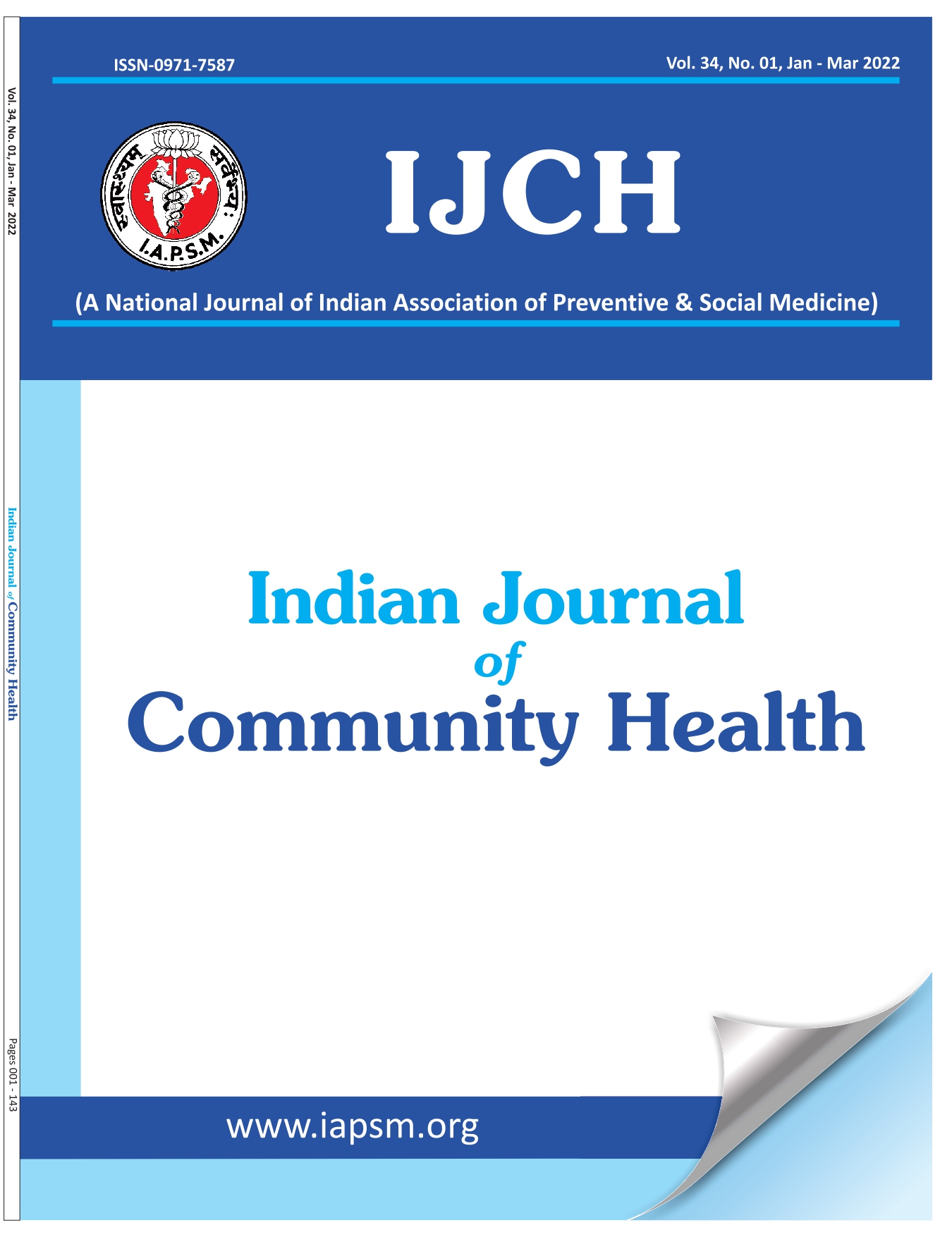Modified BG Prasads Socio-economic Classification-2018: The need of an update in the present scenario
DOI:
https://doi.org/10.47203/IJCH.2018.v30i01.014Abstract
Modified BG Prasad socioeconomic scale has been in use for determining the socio-economic status of study subjects in community-based health studies in India since 1961.It is an income-based scale and, therefore, constant update is required to take inflation and depreciation of rupee into account. For industrial workers (IW), the consumer price index (CPI) is used to calculate updated income categories at any given point of time, viz Jan 2018.
These details of the calculations involved will help many researchers to calculate specific income categories for their ongoing and prospective research work in current calendar year. On the Department of Labour website (www.labourbureaunew.gov.in), state-specific CPI values are also available and should be used to determine more accurate income categories.
The current exercise is a step towards increasing the validity of use of classification with relevance to the current price levels and enabling a real time update for a considerable time in the near future.
The health behavior of an individual or a community is interdependent on their socio-economic status. The concept of socio-economic status is widely used in medical sociology. The social standing of an individual or a family in the society can be measured by it. Therefore, is an important factor affecting the health condition of an individual or a family. (1)
Socio-economic status has been defined as “The position that an individual or family occupies with reference to the prevailing average standards of cultural and material possessions, income and participation in group activity of the community”. The social status may be inherited, but in modern society it is achieved on the basis of occupation, income, type of housing and neighborhood, membership of the certain associations and organizations, material, possessions, etc. (2)
In India, several methods or scales have been developed for classifying different populations based on their socio-economic status, viz. Parikh scale 1964, Shirpurkar scale 1967, Jalota scale 1970, Kulsherestha scale 1972, Srivastava scale 1978, Bharadwaj scale 2001. (3-8)
Modified BG Prasad’s classification that is used for both urban and rural areas. Modified Kuppuswamy classification is used in urban and peri urban areas which considers the education of the head of family, occupation of head of the family and per capita monthly income.(9,10) Another classification for rural areas is Uday Pareekh classification which takes into account following characteristics namely caste
Downloads
Downloads
Published
How to Cite
License
Copyright (c) 2018 Indian Journal of Community Health

This work is licensed under a Creative Commons Attribution-NonCommercial-NoDerivatives 4.0 International License.





